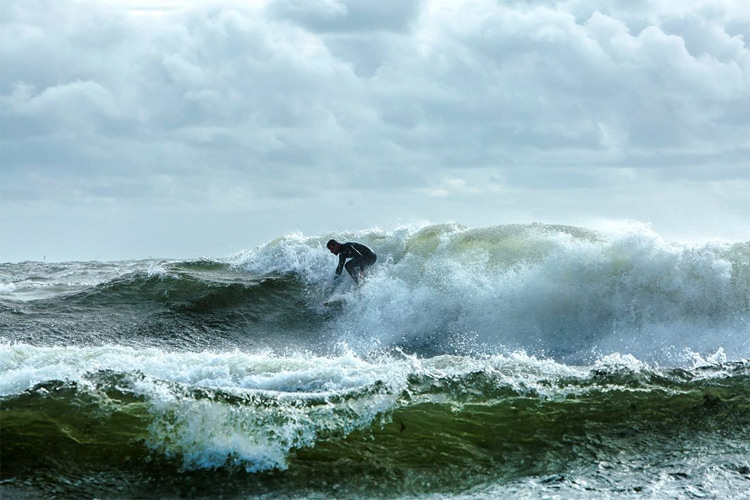Surf culture in Finland is said to have started around 1997 when people began catching waves in Yyteri Beach, Pori.
However, the first Finish surfing pioneers to hit the country's cold waters in the mid-1980s were Matti Finholm and several local windsurfers.
At that time, the Finnish surfing culture had not yet taken off.
It was the time of the windsurfing boom, so surfing never quite gained traction - there was no information on where to get surfboards and find surf shops.
And the boards available were not the best for Finnish waves either.
There are reports of surfing activities in the autonomous region of the Åland Islands, a 6,700-island archipelago located west of Helsinki in the Baltic Sea, in the early, pre-internet era years of 1994 and 1995.
A few curious surfers were also spotted in the small seaside town of Hanko, in the south of Finland, in the mid-1990s.
"We were surfing in Hanko on September 28, 1994, when rescue helicopters were flying over the back," recalls veteran surfer Mikko Vormala.
On that day, an Estonian ferry capsized and sank in the Baltic Sea, resulting in 909 deaths.
According to Juha Sila, founder of the Offshore surf shop, until 2000, Finland was referred to as "no-wave land."
"One of the most important turning points was when, in 2004, a magazine reported that a group of snowboarders went surfing in Yyteri," notes Sila.
"After this, people began traveling from the Helsinki metropolitan area to Pori in search of surfable waves."
There is also a rumor on the internet that, based on a newspaper advertisement, a boat was already surfing in Finland in the 1950s.
"Well, first, it wasn't surfing, and second, what they meant for surfing was water skiing behind a boat's stern wave," adds Juha Sila.
So, here's how Finland developed a surf culture in Scandinavian waters.
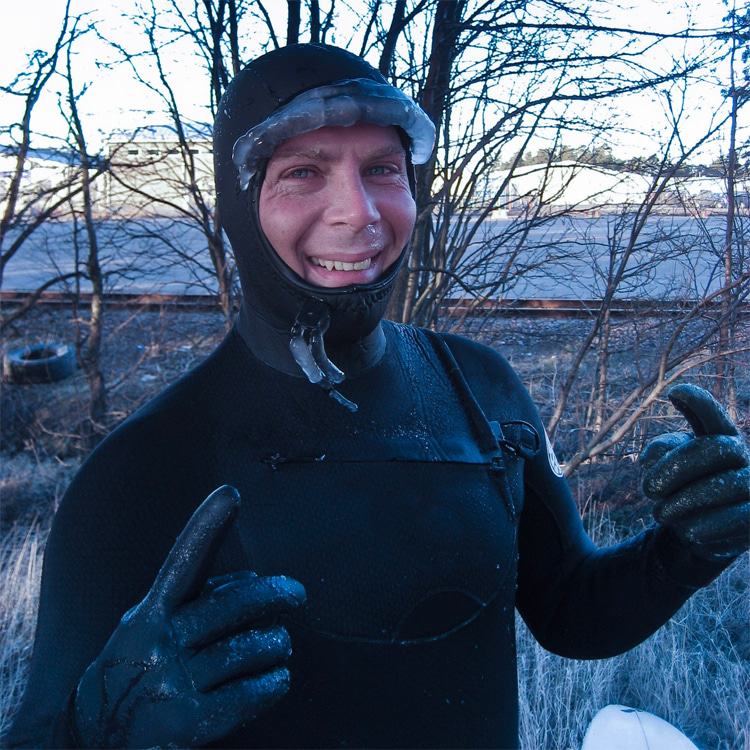
1997-1998: The Birth of Finnish Surfing
In 1997, Finland saw the first surfboards appear here and there; the country also had conditions to host a surf shop.
A few stories were printed about the good surfing conditions at Pori, but initially, they were deemed as nonsense.
To back up the reports, Juha Sila started taking photos of Finnish waves and surfing.
It was not until 1999, when the scanned paper images of the waves and their surf stories spread rapidly from one circle of friends to another, that a surf culture and a unique surfing experience began to form in Pori.
In 1999, curious people from the Tampere and Pirkanmaa region started visiting Pori regularly to check the local surf break.
It was the start of a "gold rush," and soon, you could hear accents and dialects from all over the country and Scandinavia at the beach.
Information about the Finnish surf shop Offshore spread to Nordic countries and Russia, and customers started coming from Oslo, Norway, and St. Petersburg, Russia.
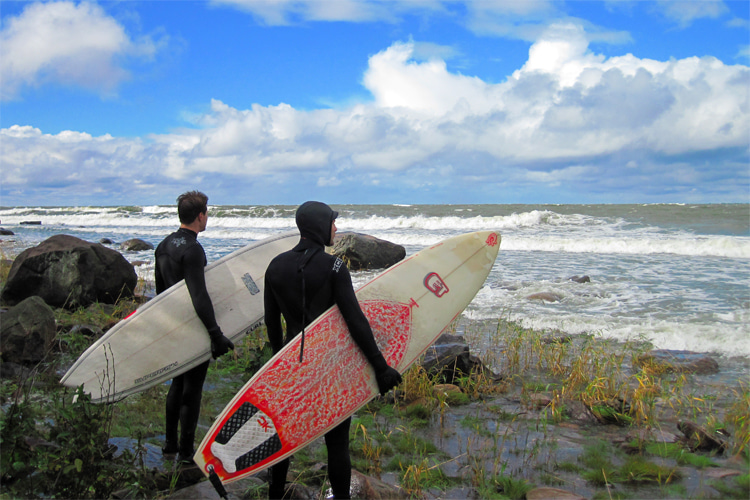
Millennium Waves
After the turn of the millennium, the Finnish surfing scene was born.
In 2000, about 20-30 active Finnish surfers visited the Yyteri area, and in 2004, local riders started exploring the Helsinki metropolitan area, including Porkkalanniemi and Emäsalo.
Many of today's famous surf spots in Southern Finland were discovered by Finnish explorers, hard-working checkers, and spot finders like Marko Vuorensalo, Aapo Virta, and Patrik Blom.
"The increase in the number of enthusiasts has not directly changed the culture and the Finnish surfing spirit of the early days," underlines Juha Sila.
"Maybe the right surf shop and a good bunch of friends have had some effect on the kick-off. But there is no localism or similar macho culture in Finland."
Finnish surfers are almost always surrounded by Nature, as the only few urban surf breaks are located in Tampere and Helsinki.
Finnish surfing is now similar to 2008, meaning that the sport's culture has changed little, except for the new spots that have been unveiled.
The surfboard shaping bays and the boards of 21st-century Finland have remained updated for quite a while now.
The only surfing revolution arrived when Ville Vihmar and Antti Kunnas brought stand-up paddle surfing to Pori.
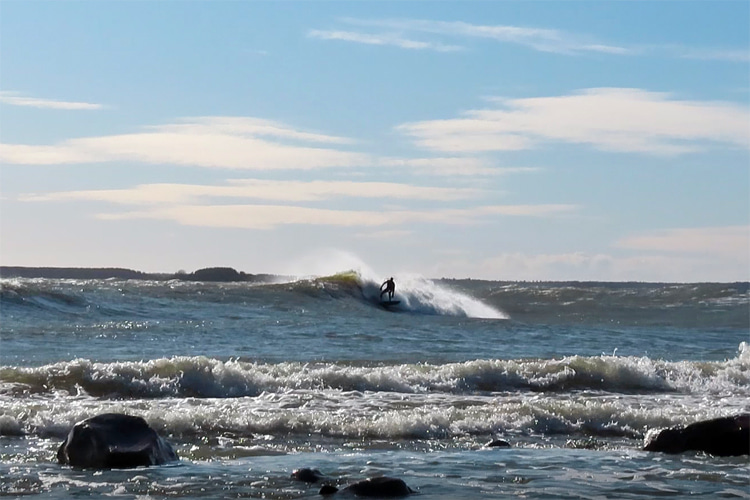
40 to 99 Surfing Days Per Year
Today, Finland provides an average of about 40 surfing days a year.
In the best years - 2006-2010 - there were about 70 days of rideable waves, compared to 1997's ten days of surf.
However, the record stands at 99 surfable days.
The water temperature plays a decisive role in the number of wave days available in Finland.
Contrary to popular belief, there are a lot of swells in the summer. The best waves usually arrive in late August or early September.
Between 2010 and 2016, there were two to three days of continuous surfing during the Pori Jazz Festival in July.
Winter is also a good time to surf in Finland as long as the waves don't get frozen, i.e., the water temperature is above 0 ºC (32 ºF).
For instance, on an average winter surfing day, you might ride around 20 waves at Finland's premier surf spots.
On the best days, especially in summer, surfers can be out in the water for several hours or even enjoy two or three sessions per day.
One wave lasts an average of 7-10 seconds, but for example, at the lighthouse island of Yttergrund, you can easily get 15 or 20-second runs.
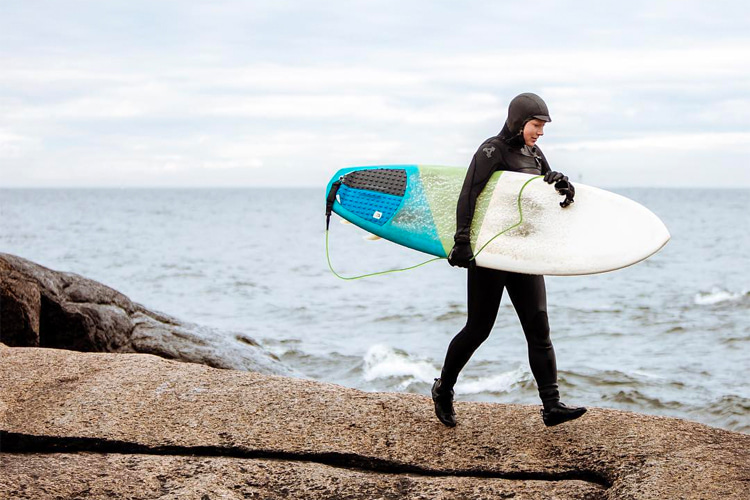
Where and When to Surf
The best surf spots in Finland are located on the west and south coasts.
North into the Gulf of Bothnia, both Sweden (Sikhjalma, Smitingen, Härnösand, Salusand, Skeleftehamn) and Finland (Mäntyluoto, Yyteri, Tulliniementie) benefit from the 370-mile (600 kilometers) north-south fetch, during summer and autumn only as ice forms during winter/spring.
The islands off Helsinki may get some SW slop on occasion, but the other end of the Gulf of Finland gets bigger waves near Sestroretsk, St Petersburg, Russia.
Storms producing winds blowing at 10 meters per second for a few hours will generate surfable waves.
The northernmost surf break is Ohtakari, an island and fishing village in the Kokkola district.
Around 130 kilometers south, near Kipplan, you'll find Storsand, a large northwest-facing stretch of beach offering good geographical conditions.
Further south, there's Pori.
Pori is the surfing capital of Finland, even though the region has long been popular with windsurfers for decades.
The area has two popular surf breaks: Yyteri and Poliisinlahti. The former is one of the nation's most crowded waves.
Padva has been considered one of Finland's best and most beautiful beaches. It is located in the stunning labyrinthine archipelago of Raseborg on the south coast.
At the southernmost tip of Finland, Hanko's Tulliniemi is another gorgeous beach open to plenty of Baltic Ocean swells.
Sarkiniemi is Helsinki's own urban surf break, while Emäsalo, an island and a village in the city of Porvoo, could also be an option down south.
The finest and most consistent Finnish surf breaks are located along the remote islands surrounding the mainland.
Occasionally, you'll see rideable waves in some of Finland's biggest lakes, including Saimaa, Päijänne, or Näsijärvi.
Generally speaking, short-period swells often produce sloppy and choppy wind waves near the shore. But three-to-four-foot waves are always welcome anywhere in the world.
The best time of the year to surf in Finland is spring and fall, even though it coincides with the time when the ocean's water is close to freezing.
Interestingly, the Baltic Sea is the only sea known to freeze during extreme winters.
If you plan to catch waves in this Nordic nation, make sure to put on a high-end 6/5 mm wetsuit, neoprene hood, boots and gloves, and wear earplugs.
Hypothermia kicks in quickly if you're not protected with the right equipment. After the surf, head into the pine forests and enjoy a public hot sauna near the beach.
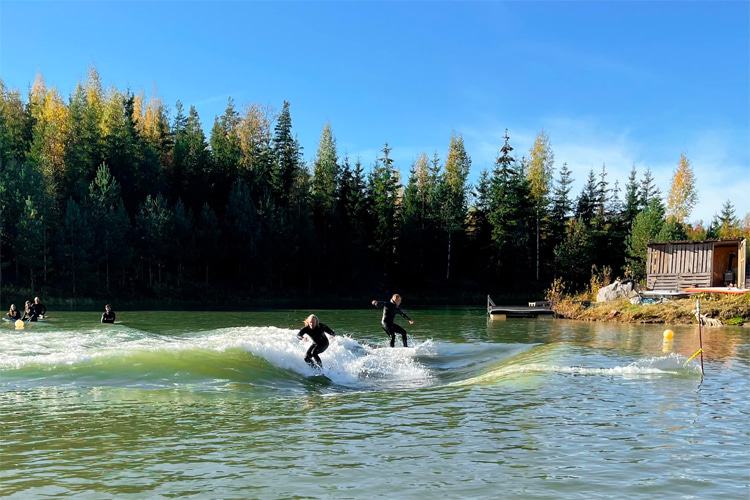
New Finnish Waves
Finland is also catching surfing's new wave.
Helsinki, the country's capital, is home to a Flowrider indoor wave machine, and there's also a river wave in Joensuu.
And if you're not yet pleased with the options, know that Artwave is a Finnish technology that blends inventiveness with mechanics and fluid dynamics to create constant surfing waves in a river, lake, or urban shoreline.
Atso Andersen, the founder of Artwave, developed a fixed and entirely mobile structure that can easily be installed to produce rideable liquid slopes.
The first three-foot wave prototype was tested in the Kalasatama district of downtown Helsinki, Finland.
"And it's not just for the surf," concludes Andersen.
"We tested changes in oxygen concentrations while making waves, and yes, they changed. We believe that artificial waves break up blue-green algae. So, if used correctly, Artwave improves water quality."
If you're still not convinced that surfing in Finland is a reality, watch "Finnsurf," the Scandinavian nation's first wave-riding movie.
